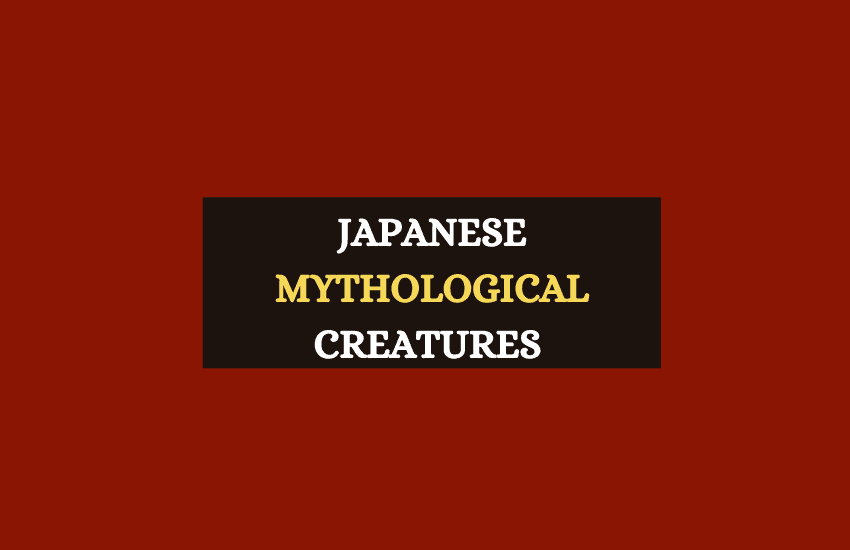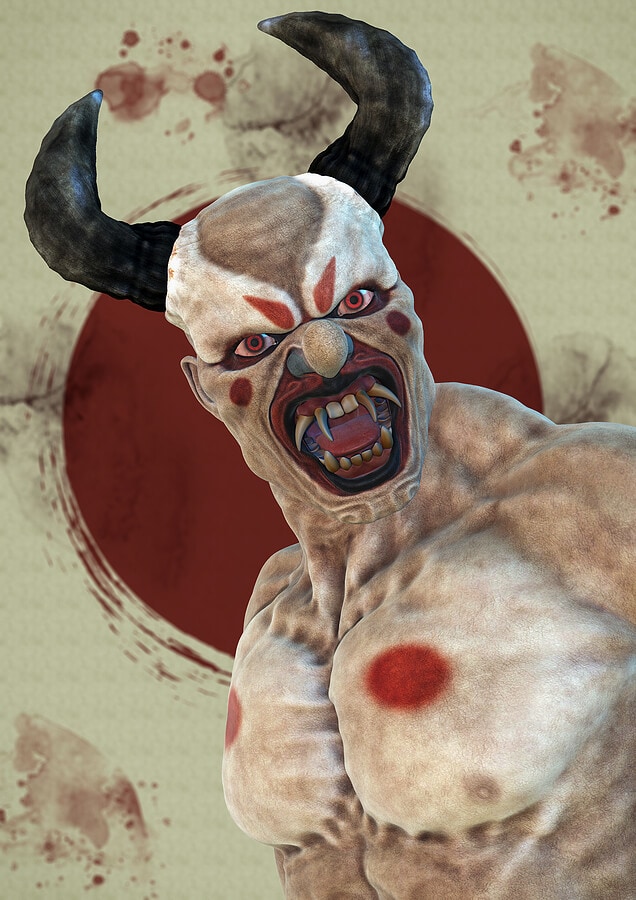
Table of Contents
Traditional Japanese mythology and Shintoism in particular, are home to many unique creatures, spirits, demons, and other supernatural beings. Kami (gods) and yokai (spirits or supernatural creatures) are the two most well-known groups of such beings but there are many others.
Navigating your way through all these types of creatures and the accompanying them terms can be difficult so here’s a quick guide.
Kami (or gods)
The most famous and most powerful group of beings in Shintoism are the kami or gods. There are hundreds of kami in Shintoism if you count all the minor kami and demigods each representing a certain natural element, weapon or item, or a moral value. Most of these kami have started as local deities for particular Japanese clans and have either remained as such or have grown into the roles of national kami for all of Japan.
Some of the most popular kami include:
- Amaterasu – the sun goddess
- Izanagi – the first man
- Izanami – the first woman
- Susanoo-no-Mikoto – the god of seas and storms
- Raijin – the god of lightning and thunder
Shikigami (or minor slave spirits with no free will)

The Shikigami are a special type of yokai or spirits. What’s unique about them is that they have absolutely no free will. They are entirely beholden to their owner which is usually a good or evil magician.
The shikigami or just shiki can perform certain simple tasks such as spying or stealing for their master. They are really good for such tasks because they are both tiny and invisible to the naked eye. The only time a shiki is visible is when it takes the shape of a piece of paper, usually an origami or a paper doll.
Yokai (or spirits)
The second most important type of mythical Japanese creatures is the yokai spirits. They are also the broadest group as they often encompass many of the creature types we’ll mention below. That’s because the yokai are not just spirits or incorporeal beings – the term also often includes living animals, demons, goblins, ghosts, shapeshifters, and even some minor kami or demigods.
Exactly how broad the definition of yokai is will depend on who you’re talking to as most people tend to have different definitions. For some, yokai are literally everything supernatural in the world of Japanese mythology! In other words, we can just as well end this list here if we want. However, whether you view the other beings below as yokai sub-types or as their own types of creatures, they are still worth mentioning.
Yūrei (or ghosts)

Yūrei are fairly easy to translate and define into English – these are still-conscious spirits of deceased people that can roam the land of the living. Yūrei are usually malevolent and vengeful ghosts but can sometimes be benevolent as well. They are usually depicted with no legs and feet, with the lower halves of their bodies trailing off like a cartoon ghost. Like the ghosts in Western culture, these creatures cannot enter a peaceful afterlife for some reason.
Obake/bakemono (or shapeshifters)
Sometimes confused with yūrei and yokai, obake are physical and “natural” beings that can shapeshift into other animals, into twisted, monstrous shapes, or even into people. Their name literally translates as a thing that changes but they are not viewed as supernatural beings. Instead, Japanese people believed that obake have a natural way to transform into people, animals, or into twisted monsters and that people simply haven’t figured out what this “natural” way is.
Mazoku (or demons)
Demons in Japanese mythology are usually called exactly that in English – demons. That’s because the term mazoku can be used rather liberally by some authors. It’s most commonly translated as demon or devil as ma literally means devil and zoku means clan or family. Some authors use the term mazoku as a specific tribe of demons, however, and not as a cumulative term for all demons. The mazoku are the demons in Japanese mythology. In fact, in Bible translations, Satan is called Maō or King of the mazoku.
Tsukumogami (or living objects)
Tsukumogami are often viewed as just a minor subset of yokai but they are definitely unique enough to deserve their own mention. The Tsukumogami are everyday household objects, tools, or often musical instruments that come to life.
They don’t do that via a curse like the objects in Beauty and the Beast, however, but instead come to life by just absorbing the living energy around them over time.
When a tsukumogami comes to life it can sometimes cause some trouble or even seek revenge on its owner if it has been mistreated over the years. However, most of the time they are just playful and harmless beings that bring color and comedic relief to a story.
Oni (or Buddhist demons)

The oni are not Shinto beings but are instead demons in Japanese Buddhism. As the two religions are intertwined, however, many creatures often make their way from one into the other or in stories that combine elements of both Shintoism and Buddhism.
The oni are famous even to people who haven’t heard their name too – they are giant demons or ogres with either bright red, blue, or green skin and faces, but they can be any color. Like western demons, oni come into being from the souls of very evil people when they die and the job of the oni is to torture the souls of people in Buddhist hell.
On rare occasions, the soul of an especially evil person can turn into an oni while the person is still alive.
Onryo (or vengeful spirits/ghosts)
The onryo can be viewed as a type of yūrei but are generally viewed as a separate type of being. They are especially evil and vengeful spirits that seek to hurt and kill people, as well as cause accidents or even natural disasters in order to exact their revenge. They are usually depicted with long and straight black hair, white clothes, and pale skin.
And yes – Sadako Yamamura or the “the girl from The Ring” is an onryo.
Shinigami (or gods/spirits of death)
The shinigami are one of the newest but most iconic additions to the pantheon of mysterious Japanese creatures. Viewed as “Gods of death”, the shinigami are not exactly kami as they don’t come from traditional Japanese mythology and don’t have an exact mythological origin.
Instead, they can be viewed as god-like yokai spirits that reside in the afterlife and determine who gets to die and what will happen to them after they die. In short, they are the Japanese grim reapers which is fitting as the western grim reapers are exactly what inspired the inception of the Shinigami.
Wrapping Up
Japanese supernatural creatures are unique and frightening, with many capabilities, appearances and variations. They remain among the most creative mythological creatures.








